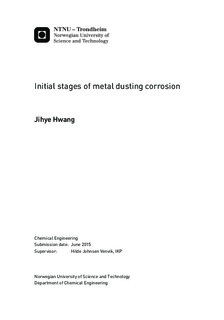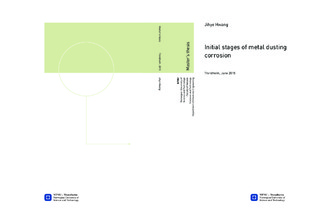| dc.description.abstract | Metal dusting is a disintegration phenomenon of metals and alloys into fine, dust-like particles. Metal dusting can be found in different reforming units in the petrochemical industry. As well as in reforming units, it can be found at high-temperature fuel cells.
The metal dusting corrosion phenomenon is initiated by unwanted carbon formation on the inner surface of process equipment. It occurs under a synthesis gaseous atmosphere (carbon activity >> 1) at high temperature with low oxygen/steam partial pressure. Since the gas contains carbon monoxide and hydrogen at high temperature, carbon is formed by CO reduction reaction and Boudouard reaction.
Carbon formation is kinetically controlled which means it is influenced by the catalytic properties and the local conditions like temperature and partial pressure. An oxide layer formed on the surface of alloys is protecting the alloy matrix from corrosion. Thickness of this oxide layer should be moderate. If the oxide layer is too thick, the metal alloys will have problems with thermal expansion and heat transfer. If it is too thin, however, the metal alloys cannot be protected from the corrosion.
To find the effects of oxidation temperature, CO exposure temperature and CO exposure time on carbon formation, oxidation treatments and CO exposure treatments were conducted. Samples were oxidized with 10% steam-Ar gas for 6 h at 540 °C or 760 °C. Subsequently, samples were exposed to 10% CO-Ar gas at 1 bar at 650 °C or 750 °C. Length of exposure time was different for each sample from 1 h to 20 h. After the experiments, surface of metal alloys was characterized by optical microscopy and scanning electron microscopy.
As a result of all experiments, the effect of CO exposure time can be summarized as follows. Regardless of sample exposure conditions, all samples have more carbon when they are exposed to CO gas for longer time. The effect of pre-treatment temperature is that lower temperature forms more carbon filaments. Finally, the effect of CO exposure treatment temperature is that lower temperature (650 °C) forms more carbon filaments than higher temperature (750 °C). | |

